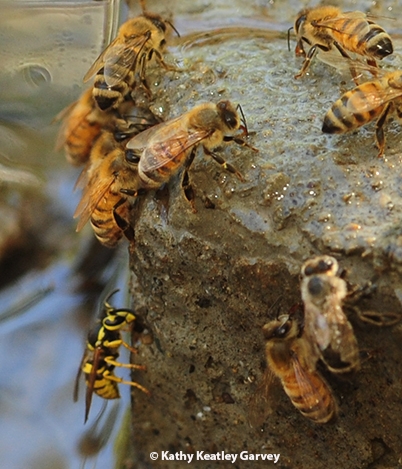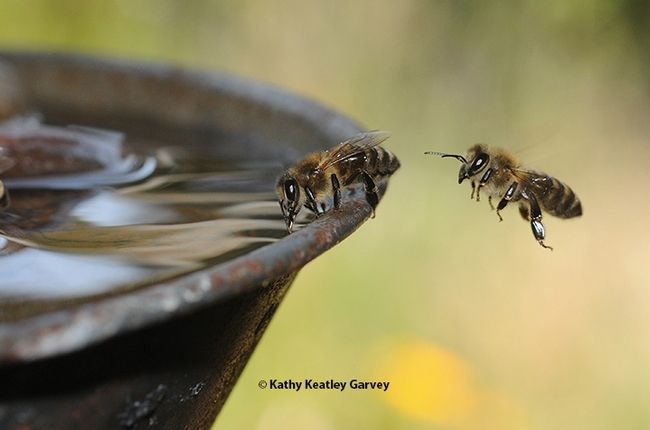- Author: Kathy Keatley Garvey

People are keeping cool--or trying to--in their homes, workplaces or in newly opened community cooling centers.
Can you imagine what it's like for a honey bee colony? The normal brood-nest temperatures should be about 93 to 94 degrees, according to Norm Gary, UC Davis emeritus professor of entomology.
In his book, The Honey Bee Hobbyist: The Care and Keeping of Bees, Gary explains that "bee colonies require small quantities of water--up to around 7 ounces per day--but the water they collect is vital to their survival. During periods of hot weather, bees evaporate tiny droplets of water in the hive to control the internal colony temperature. Maintenance of internal colony humidity is important to developing larvae. In addition, nurse bees use water to reconstitute honey to nectarlike consistency when feeding larvae."
We remember Extension apiculturist Eric Mussen (now emeritus) of the UC Davis Department of Entomology and Nematology, telling beekeeping associations to "always provide fresh water for your bees on your property. Otherwise, they will visit the neighbor's hanging laundry, bird bath, swamp cooler, dog dish, leaky hose connection, etc."
In his book, The Backyard Beekeeper: An Absolute Beginner's Guide to Keeping Bees in Your Yard and Garden, Kim Flottum, then editor of Bee Culture magazine, points out that "A summer colony needs at least a quart (liter) of water every day, and even more when it's warm."
"Water is used to dissolve crystallized honey, to dilute honey when producing larval food, for evaporation cooling during warm weather, and for a cool drink on a hot day," Flottum writes in his book.
Some folks add stepping stones or corks in water fountains, bird baths or ponds to assist the bees in their water-collecting endeavors. Usually, though, bees simply stand at the water's edge.
"Probably the most successful homemade water feeder design," Gary says, "is an inclined board that allows water to trickle down slowly into a catch basin so that it can be recirculated."



